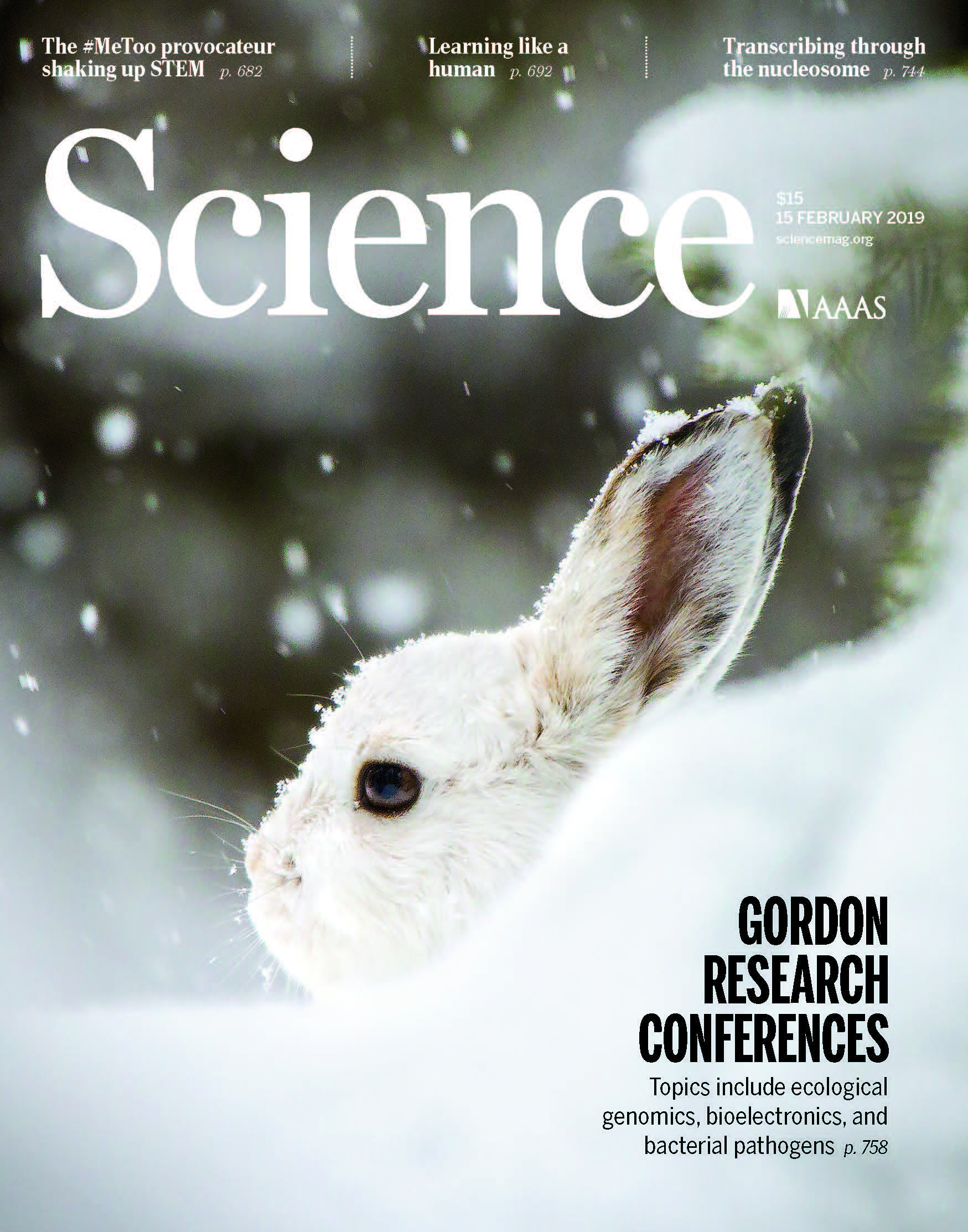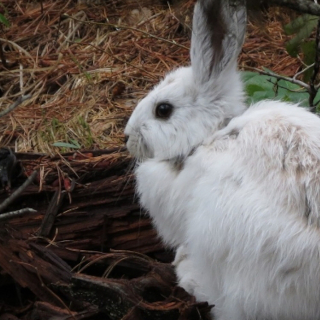One of our hares made it into the journal Science again, this time on the cover!

We had hoped that we would make the cover of Science for our two research articles in 2018 (on seasonal coat color mismatch globally, and on the genetic basis of winter brown vs white in hares). Our cover art got edged out for those two articles, but you may have noticed a familiar sight on the cover of the Feb 15 issue. This is one of our beautiful radio-tagged snowshoe hares from our Seeley Lake (Montana) research site. This hare, and many others, literally catalyzed our snowshoe hare / coat color mismatch / climate change adaptation research program.
So how did this picture get on the Feb 15, 2019 issue of Science?
The photo credit is to Colin Ruggiero, an extraordinary wildlife photographer from Montana. Colin was just blossoming as a professional when, in 2012, High Country News decided to do a big article on our snowshoe hare research. High Country News chose Colin to shoot the story. We had a great time in the field, and the article (and photographs) was fantastic and won awards. Interestingly, the title of that story prophetically and accurately captured where we continue to head with this project now and going forward: “The Color of Bunny: Can evolution save species from climate change”.
The small world gets smaller with the detail that Colin’s dad was the one who got me started studying snowshoe hares in the late 1990s! Len Ruggiero was the Director of the US Forest Service Rocky Mountain Research Station, which is located here on the University of Montana campus and has always been a close research collaborator with UM. Soon after I was hired as a new Assistant Professor, Len came in my office and told me I needed to become a snowshoe hare expert. I told him I had seen a couple while skiing, but knew nothing about snowshoe hares. He told me that was about to change: the Canada lynx was being considered to be listed as a Threatened species, and precious little science existed – especially in the western U.S. -- about their main prey, snowshoe hares. He gave me some seed funding to learn how to study snowshoe hare population dynamics (I have some embarrassing stories to tell about those early days, but that’s for another time). I leveraged that into grant support from NSF and other funders, and that began our 20 year time series with >10,000 captured hares (1998-present).
But what about the Feb. 15 Science cover?! How did that hare picture get there? Well, the 15 Feb issue has a section on the upcoming Gordon Research Conferences. My University of Montana colleague and collaborator Dr. Jeff Good, a co-author on both of our 2018 Science papers, was invited to speak at one of the Gordon Conferences. So when the Science folks asked the Gordon speakers to nominate eye candy for the Feb. 15 issue, Jeff sent them some of the best from Colin’s photo shoot from the field in 2012. And that’s how our Seeley Lake, Montana hare made this week’s Science cover.
Finally, I have to add that this is not the first time one of our charismatic, lovely hares made a journal cover. In the past few years our wild snowshoe hare research photos have been featured on the covers of: Proceedings of the National Academy of Sciences, Ecology Letters, Proceedings of the Royal Society, Ecoscience, and (in sketch form) Biological Reviews. Hare hare!
Scott Mills
